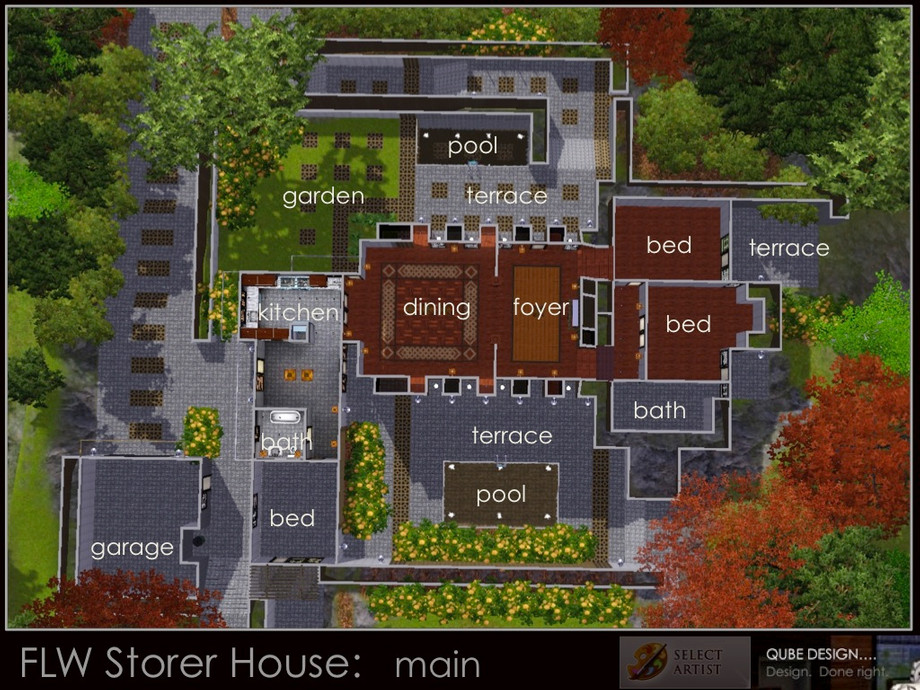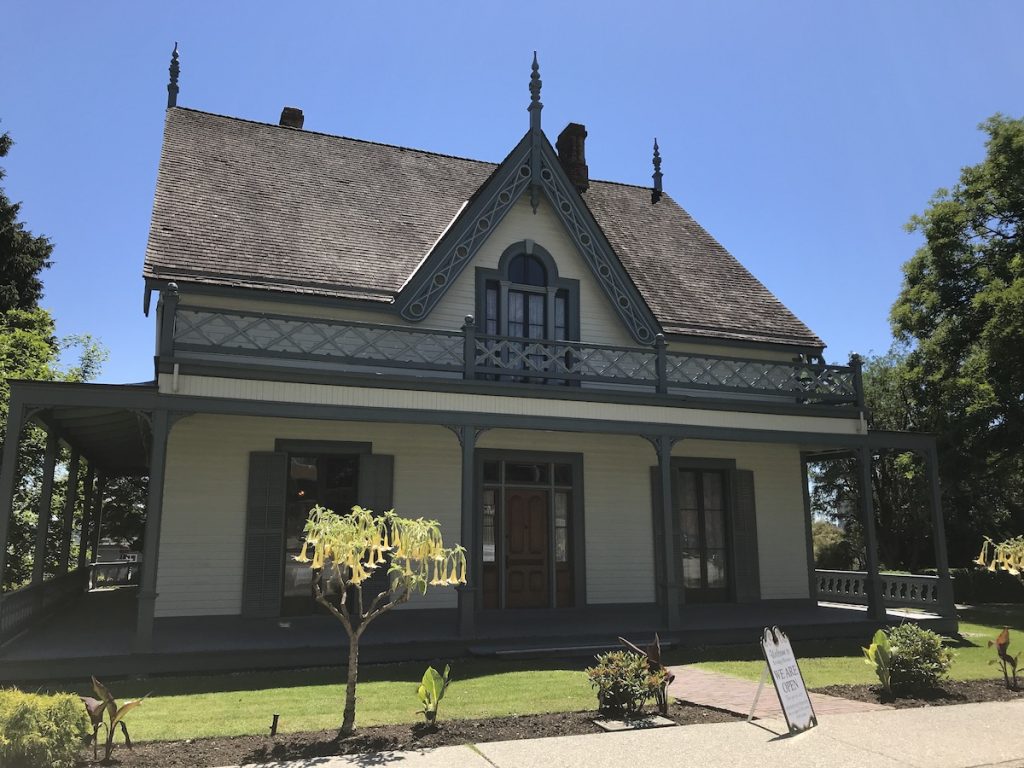Table Of Content

The house looks typically mid-century modern from the outside, but inside the interiors are typical Wright. The style is basically Usonian but takes advantage of the sun in a unique way. The polished concrete floors are Wright’s typical Cherokee Red, inscribed into squares.The house has two bedrooms and two bathrooms and occupies 1,988 square feet. The small entry area keeps visitors from lingering there and moves them quickly inside. The central workspace is rectangular in shape and opens onto a terrace. The living room has one curved wall facing the promenade, and the wing containing bedrooms and bath have curved front and back walls.
Frank Lloyd Wright's Textile Block Houses Weave an Enduring Legacy - pbssocal.org
Frank Lloyd Wright's Textile Block Houses Weave an Enduring Legacy.
Posted: Tue, 06 Mar 2018 08:00:00 GMT [source]
Engineering Record, Landscapes Survey
Though concrete was still considered a new material in the 1920s, especially for home construction, Wright believed it had promising potential for affordable housing. He created a block construction system with patterned surfaces, which lended a unique textural appearance to both the exteriors and interiors of his residences. The concrete—a combination of gravel, granite and sand from the site—was hand-cast in aluminum molds to create blocks measuring 16”x 16” x 3.5” that were then woven together with steel rods, giving the textile block houses their name. The Ennis House is unusually monumental and vertical for a Wright residence, but when the architect completed it in 1924 he immediately considered it his favorite. The present floor lamp was the ideal design to illuminate the space.
If Digital Images Are Not Displaying
Barnsdall was already planning to move out of her house and donate it to the city of Los Angeles. In January 1923, Frank Lloyd Wright moved into an office at 8228 Fountain Ave., in what is now West Hollywood. He had finished one house in Los Angeles, for the oil heiress Aline Barnsdall.
Millard House, 1923
If you only have a couple of hours to spare and you want to see a Frank Lloyd Wright home, opt for the Hollyhock House where you can take a guided tour. Built between 1919 and 1921, it represents Wright's efforts to develop a style of architecture for Southern California. The textile-block houses, in a way that has been under-explored, were also expressions of grief — of turning away from the world — for Wright. It wasn’t just the non-European qualities of Maya ruins that Wright picked up on and exploited.
Current owner Konrad Pearce is the original owner’s grandson and is working to restore the house. Silver sold it in 2002, and it 2015 it sold again to a “preservation-minded buyer for what is expected to be a record price for a Wright house,” as reported by Curbed LA. They go on to say that the LA Times reported the final sale price as $6.8 million. In 1927, Barnsdall donated the residence and its surrounding 11 acres of land to the City of Los Angeles so that it could be used as a public park in memory of her father. Hollyhock House is now part of the Barnsdall Art Park Foundation, and the park is used for art classes, working studios, a gallery, and a theatre – returning full circle to Barnsdall’s original ambitions for the site.
Views
The Sturges House is Usonian in style, uncluttered with only two bedrooms and one bath and less than 1,200 square feet. In fact, its 54-foot-long cantilevered terraces are almost larger than the living area. In the overhanging pergola roofline, you can see similarities to Fallingwater. A designated Los Angeles Historic-Cultural Monument, the Sturges House soars above a central brick core and is cantilevered beyond its base, creating a sense of motion and an elegant streamlined shape recalling a stately yacht. Walls of brick and horizontal bands of timeless redwood are its underpinnings.
John Storer House: Home to Frank Lloyd Wright Architecture
The Freeman House located at 1962 Glencoe Way in Los Angeles is one of three textile block houses Wright designed in the Hollywood Hills in the 1920s. The regionalism of the houses, their response to the landscape, history and climate of Southern California, is at once their most powerful and most naive feature. Wright saw in pre-Columbian designs from Mexico the seed of a potential American architecture that didn’t rely on European precedent. Wright was especially keen on finding an alternative to L.A.’s ubiquitous Spanish-style buildings — to the red-tiled roofs that struck him as out of place here, that “give back the sunshine stained pink,” as he put it. The house was commissioned by Dr. John Storer, a homeopathic physician, who was a friend of Wright’s. The house is located on a steep hillside, and Wright designed it to take advantage of the views.
Frank Lloyd Wright
During the project, Wright and Barnsdall encountered a series of artistic differences. Wright was designing the Imperial Hotel in Japan at the same time and so allegedly left a lot of decisions to his son Lloyd Wright and the Austrian-born American soon-to-be-superstar architect Rudolph Schindler. Towards the end, Barnsdall fired Wright from the project and the house was finished by Schindler. The Hollyhock House, was commissioned by oil heiress Louise Aline Barnsdall and named after her favorite flower. The Hollyhock House was Wright’s first foray in Los Angeles and is the only of the eight houses here that you can tour. The Hollyhock House is part of a ambitious living and arts complex set on 36 acres that was to include an avant-garde theatre and cultural complex called Olive Grove.
Mega-Producer Joel Silver Lists His L.A. House for $77.5 Million - Mansion Global
Mega-Producer Joel Silver Lists His L.A. House for $77.5 Million.
Posted: Tue, 01 Oct 2019 07:00:00 GMT [source]
Similar to the architecture of the house, the design of the lamp is at once simple in its form and tremendous in its visual power. The lamp’s strongly linear base matches the building’s impressive verticality, while its cantilevered square shade echoes the block configuration. Constructed from thin sheets of iron, the floor lamp also maintains a delicacy to balance the heaviness of the concrete. The shade’s frosted glass panels cast an atmospheric glow around the room, amplifying the feeling of having stepped into a temple that is simultaneously ancient and modern. The Millard House, also known as La Miniatura, located at 645 Prospect Crescent in Pasadena, sits on an acre of gardens and offers beautiful views.
After some devastating damage and a long search for the right buyer, the house was sold and was under renovation. Named after original owner Aline Barnsdall's favorite flower, Hollyhock House was just part of a living and arts complex set on 36 acres. It was Wright's first commission in Los Angeles and one of his first open floor plans.
Well, that lonely and ignored Storer House located on 8161 Hollywood Blvd caught Joel’s eye. He immediately started the renovation process to the original concept Mr. Wright had for this house of organic architecture. The renovation would be aided with the help of Mr. Wright’s grandson Eric Wright, as well as the then-president of the Los Angeles Conservancy.
They are connected by a complex L-shaped stairwell that partly rests on the fireplace. The kitchen and ancillary areas form another low block crowned by another terrace at living-room level.
Architecture of the day, which by the mid-1920s was largely Spanish Revival of one kind or another, and from everything Wright had done up until then. Wright named the compound Taliesin, after a hero and poet of Welsh lore. Los Angeles was booming; the city’s population, 577,000 in 1920, would reach 1.2 million by the end of the decade.

No comments:
Post a Comment